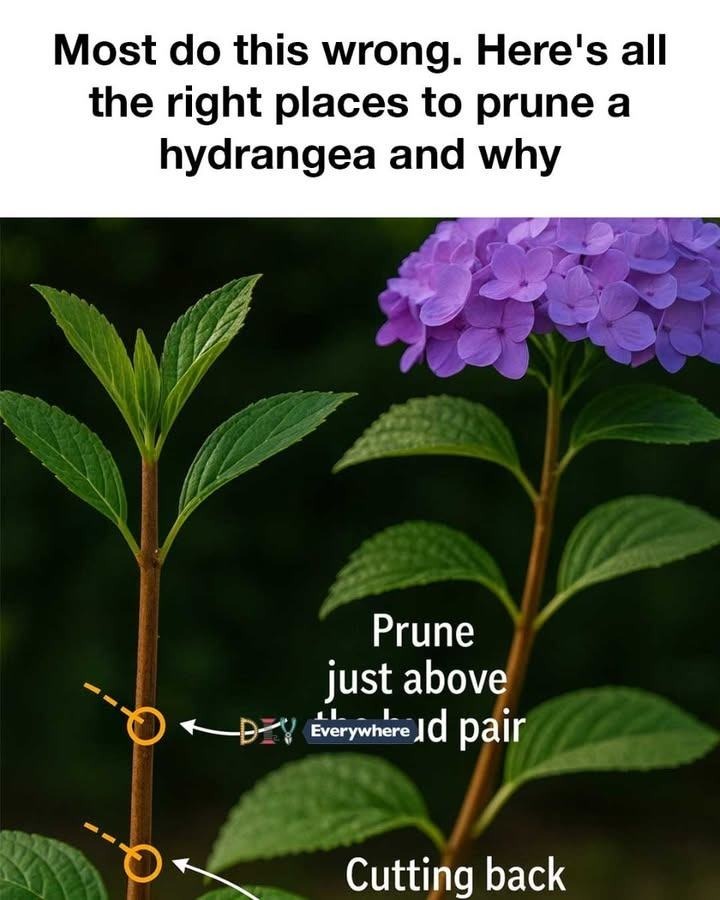Prune in late winter or early spring before new growth starts.
Cut back the stems by about 1/3 of their height to encourage strong, upright growth and larger flower heads.
🌿 Why it works: These plants form their blooms on the new stems that grow in the same year — so you’re not cutting off next season’s flowers.
✂️ Pruning Smooth Hydrangeas (New Wood)
This includes ‘Annabelle’ — known for big white snowball blooms.
✅ The Right Way:
Prune hard in late winter or early spring (just like panicle hydrangeas).
Cut stems down to 6–18 inches from the ground to encourage lush growth and big blooms.
🌿 Want stronger stems? Don’t cut them too short — leaving 12–18 inches can help support heavy flowers better.
✂️ Where Exactly to Cut (All Types)
Regardless of type, follow these general pruning tips:
Always cut just above a healthy bud or pair of buds facing outward.
Use clean, sharp pruners to avoid damaging the plant.
Remove dead, crossing, or spindly stems any time of year.
If you’re unsure whether a stem is alive, scratch it lightly with your fingernail — green underneath = alive.
🚨 Still Not Blooming?
If your hydrangea didn’t flower this year, it could be due to:
Pruning at the wrong time (especially for bigleaf types)
Late frost damage killing buds
Too much nitrogen fertilizer (promotes leaves, not flowers)
Too much shade — most hydrangeas prefer morning sun and afternoon shade
🌸 Final Thoughts: Prune Smart, Not Hard
Pruning hydrangeas doesn’t have to be confusing — but it does have to be timed right and type-specific. The biggest mistake people make is treating all hydrangeas the same.
So before you reach for the shears, take a minute to figure out what kind of hydrangea you have — then prune with confidence, knowing you’re setting your plant up for its best bloom yet.
Most people do this wrong. Now you won’t.
ADVERTISEMENT

